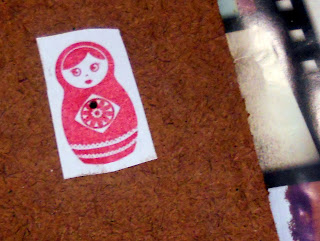There is this magical bookshop in Florida Road called "Ike's Books" in which I bought these five books, along with an hour or two of wholehearted engagement and intrigue with my surroundings.
The first is a catalog of antique household objects. The pictures are delightful and in place with explanations and descriptions.
While some objects are just more interesting looking versions of today's equivalents, some are out of use completely. The moustache guard for one is not exactly commonplace. In fact, a man with a moustache is practically a collectible now days.
My next buy is this book on the history of toys. It has some beautiful black and white photographs of old toys, and tells the story of toys over the years and the purposes they have served and rolls they have played.
This zeotrope is the successor of the Thaumatropes which I have looked into. It projects the sequence of images onto the wall whilst rotating, making a sort of stop frame animated scene.
Next is this book of 100years of collectible jewellery. While the intention of the book is to provide a price guide to the pieces at the time of publication, I am looking at it in context of what makes a piece collectible or more precious than other jewellery. What makes it worth keeping and worth passing down and keeping in the family? This fits in with the idea of an heirloom and I had not thought of this approach to it before happening upon this book.
Many of the examples seem to be "accessories" rather than what we would normally term "jewellery" and also mostly with outdated uses.
Today one would have a purse fitted with slots for a credit card, coins, and money, and even key rings in some cases. This would then go into a larger bag to fill with the clutter of the modern world: cellphones, gate remotes, pens, cameras, aerosol deodorants, etc.
The combs we now have in our hair are often cheap offensive plastic. We buy them in packets full from chinese shops overflowing with a hundred of anything you can use and lose without worry. From these shops we do not buy anything which we intend for a future child, or for a parent in the hopes of later inheriting.
One of my favourite buys is this nursery rhyme book which honestly includes about every rhyme I grew up reciting as a child. But not only this, it also includes an unassuming illustration of each, almost as if to say "(sort of like this)" of the scenes depicted by the words of each rhyme. It then includes the music for the rhyme.
In its day I am sure the music would have been used to play with hearty elegance at the piano, but now might serve to clumsily figure out how that rhyme we once knew might have gone, when the mother, grandmother, or teacher that used to sing it for us is no longer there.
This inscription on the tea-stained-like front page is a story of it's own, and the closest we might get to sharing it is to partake in the rhymes to ensue.
Finally, I bought this.
This book ushered me towards it from across the room. I am positive that the mythical sliding ladders which swept you from one end of the bookcase to the other were made especially for moments like these.
I have to admit that when I first saw it it would not have mattered if its contents were a guide to cooking with wheat (being gluten-intolerant it would have held little purpose for me) because its proverbial wrinkles and grey hair, tattered clothes and crackling voice, had won me over. Love at first sight.
Fortunately, it also happened to be a collection of Byron's poems.
The pictures speak more than I can about this treasured find.
Time! on whose arbitrary wing
The varying hours must flag or fly,
Whose tardy winter, fleeting spring,
But drag or drive us on to die---
Hail thou! who on my birth bestowed
Those boons to all that know thee known;
Yet better I sustain thy load,
For now I bear the weight alone.
I would not one fond heart should share
The bitter moments thou hast given;
And pardon thee---since thou couldst spare
All that I loved, to peace or Heaven.
To them be joy or rest---on me
Thy future ills shall press in vain;
I nothing owe but years to thee,
A debt already paid in pain.
Yet even that pain was some relief;
It felt, but still forgot thy power:
The active agony of grief
Retards, but never counts the hour.
In joy I`ve sighed to think thy flight
Would soon subside from swift to slow;
Thy cloud could overcast the light,
But could not add a night to Woe;
For then, however drear and dark,
My soul was suited to thy sky;
One star alone shot forth a spark
To prove thee---not Eternity.
That beam hath sunk---and now thou art
A blank---a thing to count and curse
Through each dull tedious trifling part,
Which all regret, yet all rehearse.
One scene even thou canst not deform---
The limit of thy sloth or speed
When future wanderers bear the storm
Which we shall sleep too sound to heed.
And I can smile to think how weak
Thine efforts shortly shall be shown,
When all the vengeance thou canst wreak
Must fall upon---a nameless stone.
-Lord Byron, 1812





















































